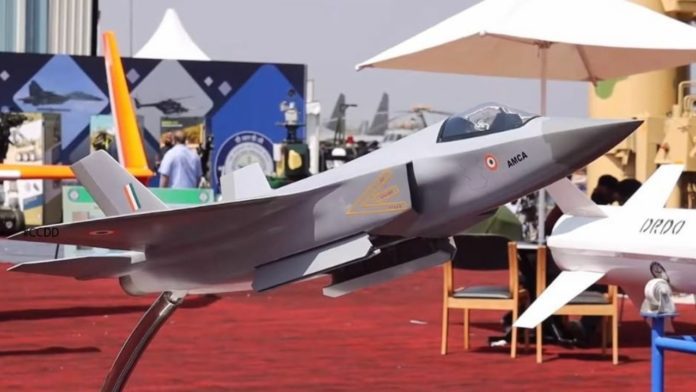SOURCE: RAUNAK KUNDE / NEWS BEAT / IDRW.ORG


The Aeronautical Development Agency (ADA) has confirmed that the AMCA Mk1 fuselage has been meticulously optimized to accommodate GE Aerospace’s powerful 98 kN F414-INS6 engine, setting the stage for its advancement.
Notably, the AMCA Mk2 variant, which is envisioned to feature an even more potent 110 kN engine, will require minimal modifications to its air intakes and fuselage. ADA has taken a proactive approach by drawing on the geometry and configuration of the Mk1 to ensure a seamless transition to the higher-powered engine without any delays in testing and production.
The most groundbreaking development in the AMCA program comes in the form of an international collaboration between India and France. Both nations have jointly decided to co-develop a brand-new engine from the ground up. The ambitious project will be overseen by the Gas Turbine Research Establishment (GTRE) from India and Safran, a leading aerospace and defence company from France. Together, they will embark on the development of an engine that will require minimal modifications to the AMCA Mk2 and share the same dimensions as the F414-INS6 engine.
The Central Cabinet Security (CCS) papers, seeking approval for the Full Scale Engineering Development of the AMCA Mk1, have been duly submitted to the Defense Research and Development Organization (DRDO) Headquarters of Scientific Advisor for processing. This crucial step marks a significant milestone in the AMCA’s journey towards full-scale development and production.
Under the planned development program, five AMCA Mk1 prototypes are set to be developed and undergo rigorous flight testing for certification. While ambitious, the envisaged duration for the development phase is estimated to be around 10 years.
The AMCA is poised to be a formidable multi-role fighter aircraft capable of meeting the dynamic demands of modern aerial warfare. With its stealth features, advanced avionics, and cutting-edge weaponry, the AMCA aims to bolster India’s defence capabilities and secure its position as a dominant force in the Indo-Pacific region.
NOTE : Article cannot be reproduced without written permission of idrw.org in any form even for YouTube Videos to avoid Copy right strikes